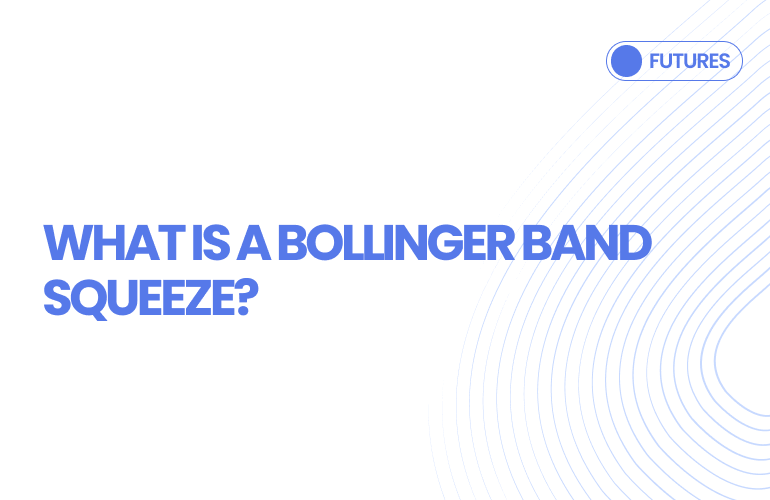Bollinger Bands are a popular technical analysis tool that helps traders measure market volatility. They consist of a simple moving average (SMA) and two standard deviation bands that expand and contract based on price movements. When volatility decreases significantly, the bands squeeze together, signalling a potential breakout.
Learn more: Bollinger Bands Explained: What They Are and How to Use Them
Understanding the Bollinger Band Squeeze
(It is recommended to add an image here of a chart showing the bollinger squeeze.)
A Bollinger Squeeze occurs when the upper and lower bands contract tightly around the price, indicating low volatility and a possible upcoming breakout. Traders use this pattern to anticipate sharp price movements.
How to Identify the Bollinger Squeeze?
- Narrowing of Bands – The distance between the upper and lower bands tightens.
- Low Volatility – Price movements become small and consolidated.
- Breakout Watch – A strong move above or below the bands suggests an upcoming trend shift.
- Confirmation with Volume – A breakout with increasing volume strengthens trade signals.
How to Determine Breakout Direction from a Bollinger Squeeze
A Bollinger Band Squeeze signals that the market is in a low-volatility phase, and a strong price move is likely. However, the squeeze does not indicate whether the price will break upward or downward. To determine the breakout direction, traders use additional technical indicators and price action analysis.
1. Volume Analysis: For confirming the strength of a breakout
- Increasing Volume → If the price moves above the upper bollinger band with a surge in volume, it suggests strong buying pressure, increasing the chances of an upward breakout.
- Weak Volume → A breakout without significant volume may indicate a false move, where the price quickly reverses.
- Volume Spikes Before Breakout → Sometimes, small volume increases before a breakout can act as an early signal of an impending move.
2. Momentum Indicators: To check market strength
Using momentum indicators can help confirm whether a breakout is likely to continue or fade. Some key indicators include:
A. Relative Strength Index (RSI)
- RSI above 70 suggests the asset is overbought, which could lead to a fake breakout or reversal.
- RSI below 30 indicates oversold conditions, increasing the chances of an upward breakout.
B. Moving Average Convergence Divergence (MACD)
- A bullish crossover (MACD line crosses above the signal line) supports an upward breakout.
- A bearish crossover (MACD line crosses below the signal line) strengthens the case for a downward breakout.
- If MACD is flat or lacks momentum, it may indicate that the breakout is weak or uncertain.
3. Support and Resistance Levels: Helps add context to breakouts
- If the price is near a strong resistance level and the Bollinger Band Squeeze occurs, a downward breakout is more likely.
- If the price is bouncing off a strong support level, an upward breakout could follow.
- Watching previous highs and lows can provide insights into where price action might go after the squeeze.
4. Candlestick Patterns: Gives early clues of breakout direction
- Bullish breakout signals: Large green candles, bullish engulfing patterns, or hammer formations.
- Bearish breakout signals: Large red candles, bearish engulfing patterns, or shooting stars.
Conclusion
While the bollinger band squeeze is a powerful signal for spotting potential breakouts, not every Squeeze leads to a profitable trade. Market conditions, existing trends, and external factors all play a role in determining the breakout’s strength and direction. To improve accuracy, traders should combine the Squeeze with other technical indicators like RSI, MACD, and volume analysis. Additionally, using risk management strategies, such as setting stop-loss orders, can help navigate false breakouts and protect capital. By applying a well-rounded approach, traders can maximize their chances of success and make more informed trading decisions.
Expand Your Knowledge on Technical Indicators
Types of Technical Indicators for Crypto Trading
What is the Parabolic SAR Indicator and How to Use It in Crypto Trading
What is the ADX Indicator and How to Use It in Crypto Trading
What is Williams %R Indicator & How to Use It for Crypto Trading

